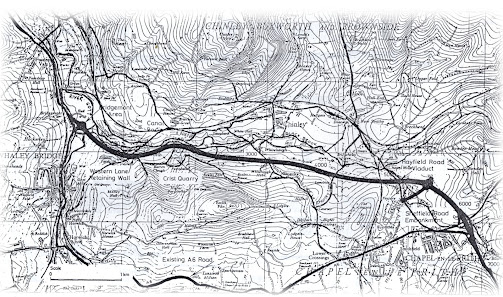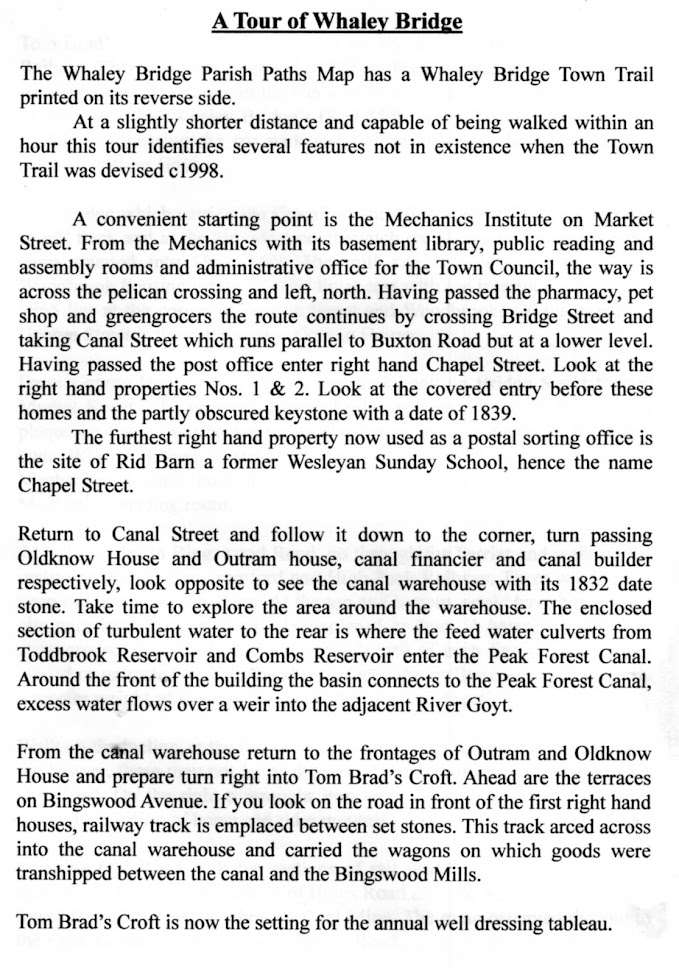THE
FASCINATING WEBB FAMILY STORY
Gill Baxter
In
March this year I received an email from Joseph Rosolino in New York.
He and his partner Gina had visited Lumber and Salt, an antique
salvage shop on the North Fork of Long Island and bought a
mathematics exercise book titled
Mr Church’s Academy Crosbie House (Frodsham),
dated 1852, belonging to Philip Webb. Joseph contacted our Archive
email address to find out more about Philip and his family.
This
is what I discovered…
Philip
Webb senior, a widower, married Martha Prout on 8th
February 1810 in
Marloes, Chepstow, Monmouth,
and
their son Henry Philip Webb was born 29th
September 1811. Philip Webb senior must have died, as on 21st April
1827, at St Laurence Church, his widow Martha Webb married John
Williams, an Exciseman
based
at The King’s Head (now the Queen’s Head). This brought the Webb
family to Frodsham. See the Webb family tree at the end of this
article.
Their
son, Henry Philip Webb, a mariner, married Eliza Grice, daughter of
William Grice, a corn dealer and tanner of Frodsham, on 5th April
1836, at St Laurence Church. Philip Henry Webb, the owner of the
exercise book, was born 15th
February 1839.
In
1841 the Census was taken on the night of 6th
June. Henry and Eliza were said to be living with her widowed mother,
Mary Grice, next to the tannery at Brook House in Main Street. Mary
was the owner of the Tannery which was run by her son John. Philip is
not on this Census entry but unusually there is a second, duplicate
entry for them on the 1841 Census, at a lodging house and shop in
Dalrymple Street, Liverpool, near to the docks, where Eliza’s
sister, Betty and her husband John Thompson lived. The Webb family,
including Philip Henry, is recorded there.
Henry
Philip Webb had previously been the captain of The Mary Ridgway and
on 6th
November 1841 he set out as captain of her sister ship, The Martha
Ridgway, on a 5-month journey to New Zealand.
The
Martha Ridgway, owned by John Ridgway, was constructed expressly for
the passenger trade. It was launched in Liverpool in 1840.
The
Martha Ridgway, a 3-masted schooner, just left of the flagpole in
Wellington, New Zealand
©
National Library of New Zealand
The
Martha Ridgeway had had a checkered career. In 1840, under Captain
Forbes, there was an outbreak of smallpox and it was the Martha
Ridgway that brought the news that the settlement of Britannia, was
to change its name to Wellington, after the Duke of Wellington
While
Henry was away Eliza
had another son, John William Webb, baptised 27th
February 1842.
On
the return voyage, the Martha Ridgway was wrecked on 27th
August 1842 at Sir Charles Hardy Island, Torres Straits between
Australia's Cape York Peninsula and the island of New Guinea. Captain
Henry and six men were reported lost.
In
1844, some of the ship’s wreckage was used by convicts to build the
Raines Islet Beacon, to the east of the Cape York Peninsula,
Queensland, Australia. The historic Beacon was added to the
Queensland Heritage Register in 1992.
Captain
Webb is remembered on gravestone OGB/01/11 at St Laurence Church and
there is a further memorial in Chapel en le Frith.
On
31st
January 1850
Eliza Webb married James Shirt at St Laurence Church, Frodsham. James
was a journeyman
stonemason from Chapel-en-le-Frith. This was a second marriage for
both of them and they were living in Church Street Frodsham in 1851.
I was curious as to why James Shirt was in Frodsham. A newspaper
cutting from the Derbyshire Courier dated 3rd
January 1846
mentions
the
death of James Shirt’s first wife, when she was visiting him whilst
he was working as a Tunnel Inspector at Woodhead on the Sheffield and
Manchester Railway. So, perhaps James had moved to Frodsham when the
railway was under construction in 1849-50.
Philip
Henry Webb stayed in Frodsham with his grandmother, Martha Williams,
in High Street near Chapel Lane (Fluin Lane) whilst he was attending
Mr. Church’s Academy. Sometime between 1851 and 1857 the Shirt
family moved to Chapel-en-le-Frith with Philip, and William Grice,
Eliza’s nephew, who was an apprentice stonemason. Philip is
described as a warehouseman. Sadly, his brother, John William Webb,
died in June 1857 aged 15.
Portrait
of Frances Webb (nee Richards)
In
1851, Frances Richards was working for John Guest Williams of Main
Street Frodsham as a Draper’s Assistant. Perhaps this was where
Frances and Philip Henry met. On 10th
January 1863 they were married in Nannerch,
Flintshire, Wales.
Interestingly her father Watkin Richards was a
Revenue Officer.
Frances
and Philip had two children, Martha Beatrice, and James Henry Philip.
Left:
Martha Beatrice Webb born 1863
Below:
James Henry Philip Webb born 1865
In
1871, the Shirt and Webb families lived in Furness Vale, in the
Parish of Disley. Their home was an end-of-terrace house in Bank End
known as Shirt’s Row. Nearby was Bank End Quarry where James Shirt
worked as a Master Mason employing 25 hands. In 1871, Philip Henry
Webb is a Manufacturer of Cotton Yarns.
The
1881 census shows Philip Henry as Proprietor of a Stone Quarry
employing 16 men and 2 boys, and in 1891 he is described as a Stone
Merchant living in Bank End. Kelly's
Directories of 1892 and 1896 list Philip Henry Webb as stone quarry
proprietor. The directories of 1901 and 1906 list his son, James
Henry Philip Webb as proprietor.
Philip
Henry died on 17th
April 1899 at his home at 38 Duchess Road Edgbaston and was buried on
19th
April at St Laurence Church, Frodsham. Probate was granted on 5th
June to Frances Webb widow, Martha Beatrice Webb spinster, James
Henry Philip Webb stone-merchant and the Reverend Frederick Haines,
Wesleyan minister. Effects: £14,033 (£2,223,712
today*)
By
1901 Frances Webb is still living at the same address in Edgbaston
and Martha is working as a Natural Science Mistress at Edgbaston High
School for Girls, having studied natural sciences at Newnham College,
Cambridge.
Martha
Beatrice Webb is
mentioned
in the Edinburgh Post in 1908, as having qualified as the only female
Doctor of Medicine from Edinburgh University. Martha spent
her career as a G P in Edgbaston, researching into matters of women's
health.
Martha’s
mother, Frances Webb of Islington Row, Edgbaston, widow of Philip
Henry, died 23 February 1917 and is buried in the family plot at St
Laurence graveyard. Probate was granted on 3rd
April to Martha Beatrice Webb. Effects: £250
(£37,893
today*).
In
1921 Martha is living at 6 Islington Row, Edgbaston with her two
adopted nieces, Dorothy Morris Japp, a Medical Student at Birmingham
University and Loën Isabel Mary Aldous, a Student at King Edward’s
School Birmingham.
On
the 1939 Register, Martha Beatrice Webb is retired and living at 36
High Brow, Birmingham. She died there on 14th
February 1951. Probate was granted on 18th
May to Mabel France and Eleanor Gladys Wright. Effects: £3,711
(about £143,747
today*)
L
och
Long, built 1876 by James
& George Thomson
Scottish Built Ships, Wikipedia
James
Henry Philip Webb followed in his grandfather’s footsteps, sailing
on the Orient Liner R.M.S. Austral from Tilbury to Sydney via
Gibraltar at the end of August 1888, and to Australia again in
January 1890 on the ship Loch Long as a Captain
Rear Admiral.
James
HP Webb married Ellen Pickford in January 1899 and in 1901 the
family, now with six month old Philip Henry, is living at Buxton
Road, New Mills. James HP is a Stone Merchant. A second child, Sidney
Watkin Webb was born in 1908. In 1911 James HP and his family are
living at Hockerley Lane, Whaley
Bridge.
They are still at Briar Cottage, Hockerley Lane, in 1921. Philip
Henry junior joined the Royal Navy Volunteer Reserve in 1918 and was
sent to Bristol.
The
1939 Register has James HP Webb and his family still living in Briar
Cottage, Whaley Bridge. He had retired as a Stone Merchant due to ill
health. Ellen, his wife, is a housewife; Sydney is a Rubber Research
Chemist; Philip Henry junior is living in Manchester as a Textile
Research Chemist and is single.
James
HP Webb of Briar Cottage, Hockerley Lane, Derbyshire died on the 24th
December 1952. He was buried at Fernilee Cemetery, High Peak.
Derbyshire. Probate was granted on 12th February to his widow, Ellen
Webb, and Philip Henry Webb textile chemist. Effects: £8,938. (about
£317,145
today*).
Ellen
Webb died on 9th
July 1960, aged 85, and was buried with James at Fernilee Cemetery,
High Peak, Derbyshire. Probate was granted on 4th
October 1960 to Philip Henry Webb, Works Chemist, and Sidney Watkin
Webb, also a Works Chemist. Effects: £6,529 (about £185,428
today*).
Philip
Henry Webb, 42 Bradford Street, Bolton, died 19th
December 1969. Probate was granted on 11th
March 1970. Effects: £18,570 (about £376,934 today*).
Sidney
Watkin Webb of Briar Cottage, 36 Hockerley Lane, Whaley Bridge,
Stockport, Cheshire died 24th
March 1989. Administration Manchester 20th
December 1989. Effects: £138,823 (£425,930 today*).
Both
Philip Henry and Sidney were buried in the family grave at Fernilee
Cemetery.
And
finally…
I
forwarded my research to Joseph and Gina, who were delighted with the
story that had enfolded. They generously donated several documents to
F&DHS Archives including a handwritten copy of Philip Henry’s
will, family photographs and original marriage certificates for James
& Ellen Webb. The will showed that Philip Henry had invested in
railways including The Great Central Railway, and the Manchester Ship
Canal Company. Joseph and Gina also gave the Society the mathematical
exercise book that had sparked the original enquiry. Philip Henry
Webb obviously became an astute businessman, perhaps due to the
tuition at Mr Church’s Academy, Crosbie House, Frodsham.
*
www.officialdata.org/uk/inflation
The family of Philip Henry Webb
Martha
Webb married John Williams in 1827
First
wife of Philip
Ι
Henry
Philip Webb married Eliza Grice in 1836 Eliza married James Shirt in
1850
1811-1842
Philip
Henry Webb married
Frances Richards John William Webb
1839-1899 Died
1917 1842-1857
Martha
Beatrice James Henry Philip married Ellen Pickford
1863-1951 1865-1952
Philip Henry Sydney Watkin
1901-1969 1908-1989
Acknowledgements
Thanks
to Gina Vigliarolo and Joseph Rosolino for their thoughtful and
generous donation. Thanks to Fiona Barry, Kath Gee and Sue Lorimer
for assistance with this article. David Easton,
Secretary and Archivist, Furness Vale History Society. Sue McGuire.
Membership Secretary, Liverpool History Society.
Lyn Helps,
Chapel en le Frith History Society.
Further
reading on Martha Beatrice Webb:
https://furnesshistory.blogspot.com/2010/11/martha-beatrice-webb.html
https://www.search.connectinghistories.org.uk/Details.aspx?&ResourceID=1516&PageIndex=45&SearchType=3
https://aim25.com/cats/8/7137.htm














%201990.jpg)

















